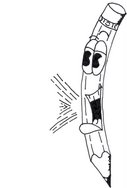Dear newspaper editors:
When people started blogging, I fear all the editorial departments across the country assumed it was just a bunch of inspired citizens who were pretending to be journalists despite their lack of formaleducation and ethics. It turns out that these bloggers didn't need either of those things to be successful because they we willing to evolve, self-educate and communicate. So before "Blogger" becomes a thesaurus entry for journalist, I offer these five piece of advice:
[*Disclaimer below]
1) Strip it
Most newspaper editors have this uncanny sense of purpose when it comes to filling a news page. They want to fit as much information onto a printed page as they possibly can. I can't express to you how dangerous this old school editorial mentality can be when you unleash it upon a Web site that has no bounds. The result ends up looking something similar to this. Take a good look at that menu side bar (far left column). I counted a total 71 different items on that thing. That's horrible. So to begin, take it all off. All of it. Most of the information that those links navigate to are just regurgitated articles shared between sections. While it may seem like a good idea for a large metropolitan newspaper to be split into subject, county and city, it confuses the sh*t out of your site's visitors. Cut it out. All of it.
2) Put it back together
Lets take a critical look at how to organize the content being produced for the printed edition. Decide how you'd like to reach your audience the most. Do not, repeat, DO NOT link to articles more than once. Get it out of your mind. Basic Web sites that focus on news tend to feature some common components:
- A simple menu navigation (Topic Box, Tabs, etc.)
- The News Feed
- A third column
I cannot urge you to focus on the news feed more than you do the stupid category/topic navigation. People who read newspapers presumably pick them up because they enjoy reading news. Also, they really don't give a damn about how it's organized. The news feed should be the center column and/or the widest column on the page. (An example would be the design of this site.) It should have a headline that is large and distinct. Underneath this headline should be the lead, or the first 300 characters of the story, (what ever works better). If you want to add pictures to make a story more appealing, then you have my blessing. But do not add them at actual size. They should complement the headline and the preview text underneath. When they click the headline link, the picture(s) can be whatever size you'd like. Here's a good example. Every editor needs to learn some basic web design. Immediately following this they need to contact a web designer with lots of experience and actually listen to them.
3) Make past articles free FOREVER
The lifeblood of what makes one Web site more dominant on the Internet over others is their presence. By offering all your content without restrictions you'll do that, which will increase your audience and make your newspaper the authority on every issue in the area. But there are also other things you can do to increase the likelihood that people will read your paper's articles over others...
4) Teach reporters XHTML, XML, and CSS.
It's not hard. The Internet is vast and arguably the best means of communication in the world. We have reporters going out into the field everyday, but when they come back they have one chance to reach people -- through print. Bridge the gap. Reporters should learn how to write for the Web in addition to content.
5) The beat reporter is dead. Long live the beat.
The Internet has caused nearly every newspaper to attempt covering every piece of information since Web sites allow for 24/7 updates. This means using beat reports to cover general assignments more often. Those beat reporters end up being overworked, stressed out, and unable to fulfill both duties. So the position is definitely in decline. But this doesn't mean the beat is dead. The Internet allows for a compilation of a specific story as it unfolds, but hardly anyone is using this. It wouldn't even be too hard. For example: A reporter covers a story, then a week later a different reporter covers a new event in this story. The article is placed on top. Wrong information is crossed out, but not deleted, and "Updates" appear on top of each story. Presumably, any one reporter could read this "beat track-back" and understand the entire story. Long live the Beat.
Sincerely,
A concerned journalist
* Disclaimer: I am NOT a Web designer by any means.
June 5, 2007
Subscribe to:
Post Comments (Atom)







1 comment:
All very valid and solid points that I hope schools of journalism will consider and implement quickly.
Post a Comment